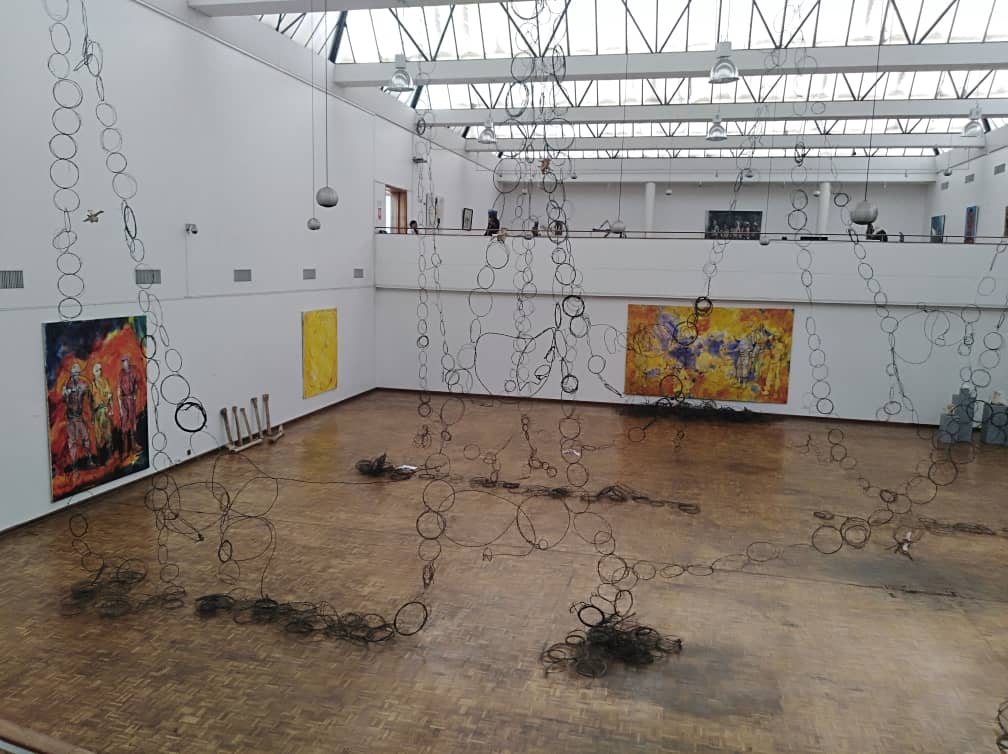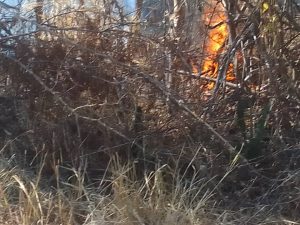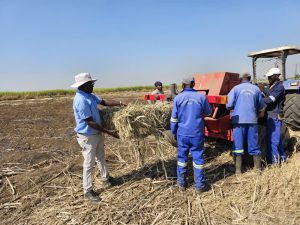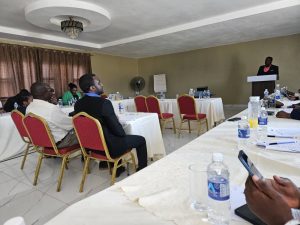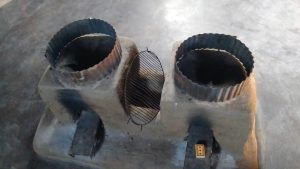Mary Mundeya
A talented artist is bringing into focus the grave danger faced by Zimbabwean wildlife through an artistic display of snares and bones of dead animals.
Victoria-Falls-based Alison Baker is also using her art to advocate against animal cruelty; emphasising the need to conserve Africa’s last remaining natural habitats and everything that lives there.
The 66-year-old Baker’s collection of recovered snares and bones of decomposed animals were recently exhibited at the National Gallery of Zimbabwe.
Dubbed A book that cannot be read (pictured), the exhibition is a remarkably provocative way to tell a topical issue in artistic fashion.
Snares are a form of traps that are often used by poachers to trap game in protected areas, and Baker uses dozens of them to highlight what she considers to be the extreme cruelty that humans are capable of visiting upon animals.
“When I was young, I would work up early every day to do patrols on horseback for more than five hours each day in the jungle of the Victoria Falls region. I would collect snares that I would then use to put together to prove the depth of wildlife crime in my area,” Baker tells EnviroPress
She says she possesses an innate bond with nature and wildlife which she has also tried to showcase through paintings.
“The fact that I had to witness evidence of cruelty against animals on a daily basis gave me profound insights into the functionary elements of the earth itself, and a stronger grasp of the aspects that harm the ecosystem and species.
“I have came across tonnes and tonnes of snares and bones of snare-trapped creatures that were already dead and decomposing. It’s tragic,” she adds with emotion.
She says her A book that cannot be read was perhaps her most imaginative anti-poaching work to date, and she would not stop to innovate new and effective ways to fight cruelty against animals.
Baker says the artwork is part of broader efforts to undo the harm that humanity itself has done against animals and nature as a whole
“Animal deaths caused by traps, vehicles, and garbage consumption are all a result of human activities,” she says.
In addition, Baker says she understands the idea that even if Earth is damaged, it always manages to repair itself.
“In darkness and destruction there is always beauty,” she says.
National Art Gallery of Zimbabwe Curator for Education and Public Programming, Livingstone Muchefa praised Baker’s artwork which he said provokes reflection on what must be done to conserve wildlife and other natural endowments.
“Baker’s exhibition calls upon us to reflect on our collective guilt and do whatever needs to be done in our small collective ways. The number of wires that have been used as spirals shown in the art gallery proves the damage that people wreck on nature,” Muchefa said.
Zimbabwe’s wildlife heritage stands threatened by poaching, illegal wildlife trade, overexploitation, illegal mining, and habitat loss largely brought on by increased animal trafficking, land expansion, agriculture, global warming, and invasive species.

